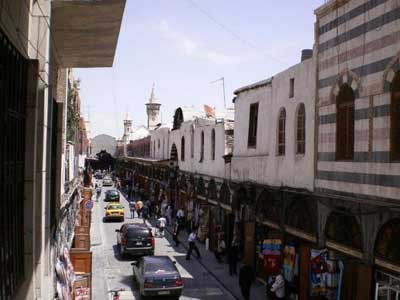The Municipal Administration Modernization MAM program in Syria aimed at improving the quality and efficiency of local governance in many walks of life.
The program addressed three main objectives: good local governance; improvement of local services and capacity building and support of urban growth in Syria.
These include among others, the implementation of these three objectives through 17 action plans, various from legal institutions to technical improvement for the local administration system in the country, regulation of some expansion areas, introducing the concept of regional planning in the country, support the local Syrian authorities to implement the national solid waste master plan ; known as ” normal master plan”; Twinning and networking between Syrian and European cities; and Traffic and transport planning .
Through each plan the program adopted the concept of learning by doing.
Moreover, the program adopted a pilot project to train the national work group through the implementation of these pilot projects. One example to be cited is highlighting administrative reforms at the local level and the good governance, where the program supported the cities of Homs, Tartous and the old city of Damascus in order simplify the municipal procedure establishing the ” one stop shop” in all these areas. Another example is the urban development in each city , the municipal program worked on two areas: informal settlement area and the new expansion area. In Damascus, the upgrading strategy for Qassyoun mountain informal settlement area and the development of the west 30 street in al-Qadam area were finalized.
One of the local competence plans of the project is the integrated conservation of the old city of Damascus. The project of ‘Visitor’s routes in Old Damascus’ is one of the major projects undertaken by the MAM program, held in collaboration with the Ministries of Local Administration and Environment Affairs. Several options were offered in these routes , starting from an inclusive route that focuses on the city ‘s ancient civilization richness to the route of traditional souqs , to the renowned crafts routes of old Damascus; the classical route that represents the Hellenistic era in the city. However, the short visit route includes several important buildings and ancient locations in the city, while the spiritual route embraces the religious landmarks of the old city.
As one of the most significant world heritage sites listed in 1979, not to mention the fact that Damascus is the oldest continuously inhabited capital in the world, the proposed routes aim at highlighting the city ‘s cultural and civilized richness. In this regard, the program considers all development areas of the world heritage site and the preservation measures applied for such area. Therefore, it includes architectural improvement and restoration, environmental improvement, traffic and transport improvement and tourism development strategy of the old city of Damascus. The program also includes several initiatives like the publication of some tourism and cultural promotion material. The first documentation book is about the Umayyad Mosque , and the second is about visitors route in old city of Damascus. So, the program tries to classify and regroup historically the visiting sites in the old city of Damascus. So, you find the classical period visiting route, the spiritual route. And in order to facilitate the visit, special road signs were installed now in the streets of the old city.
Works also covered additional routes like traditional food routes. The project was expanded to encompass the cultural areas outside the walls of Damascus, including al-Qanawat, Saarouja and al-Meedan areas. For instance, in al-Meedan area, the food restaurants are important but with no promotion for tourists. It is limited to national clients who know the importance of this kind of tourism. Therefore, efforts were made, in an attempt to develop this experience and very soon tourists will be able to download the maps and the Brochures from the Internet.
Tomader Fateh

